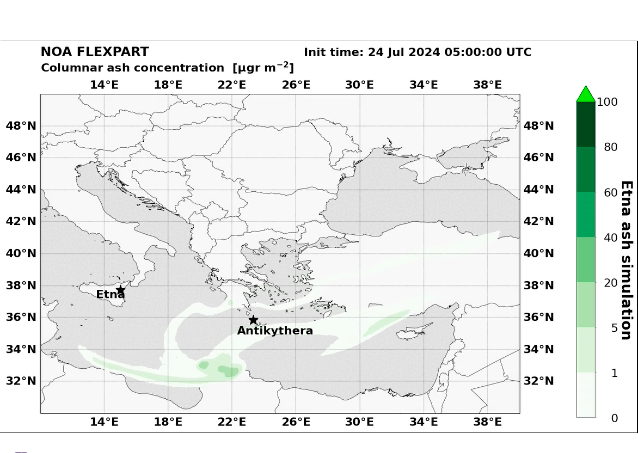Etna stirred once more on the evening of Monday, July 22, reaching its peak activity on July 23 at 10:30 a.m. Greek time.
Yesterday afternoon, a mixture of volcanic ash and sulfuric gases arrived over Attica and the northern part of the Peloponnese, at a height of up to eight kilometers above sea level, according to the Institute of Astronomy, Astrophysics, Space Applications, and Remote Sensing of the National Observatory of Athens.

The Institute notes in a post on social networks that it is monitoring the phenomenon, as low clouds of ash and gases affect the signal of the Observatory’s PollyXT lidar system, which has been operating since June 2018 at the PAGAIA Observatory.
The Institute has developed an early warning system for the transport of volcanic ash and sulfate suspensions and through data processing has the ability to provide forecasts for these phenomena.
Ask me anything
Explore related questions





